Transforming Business English Fluency with Interactive Shadowing Techniques
Discover how the powerful echo technique can revolutionize your professional communication skills
Understanding Shadowing in the Business English Context
When I first discovered shadowing as a language learning technique, I was amazed by its simplicity yet profound impact. At its core, shadowing is an "echo" technique where you repeat audio immediately after hearing it—essentially becoming the speaker's shadow. Unlike traditional memorization or grammar exercises, shadowing engages multiple senses simultaneously, creating a more immersive learning experience.

For business professionals, shadowing is particularly valuable because it targets the exact skills needed in high-stakes professional environments. While traditional methods might help you understand business terminology, shadowing helps you internalize how native speakers actually use these terms in context, with natural intonation and rhythm.
The science behind this technique is fascinating. When we shadow, our brains create stronger neural pathways by engaging multiple processing centers simultaneously: listening, speaking, and motor coordination. This multisensory approach is especially beneficial for language functions lesson planning in professional contexts, where communication needs to be both accurate and natural.
The Shadowing Process
The cognitive process behind shadowing creates a powerful learning loop:
flowchart TD
A[Listen to Native Business English] -->|Immediate Repetition| B[Vocal Shadowing]
B -->|Neural Reinforcement| C[Pronunciation Pattern Recognition]
C -->|Muscle Memory Development| D[Internalization]
D -->|Confidence Building| E[Natural Business English Production]
E -->|Continuous Practice| A
style A fill:#FF8000,stroke:#333,stroke-width:1px,color:white
style E fill:#FF8000,stroke:#333,stroke-width:1px,color:white
As I've implemented shadowing in my own language learning journey, I've noticed that it bridges the gap between passive understanding and active production—exactly what business professionals need when moving from understanding industry terms to confidently using them in meetings, presentations, and negotiations.
Core Benefits of Shadowing for Business Communication
In my experience working with business professionals, I've observed five key benefits that make shadowing particularly effective for enhancing business English skills:
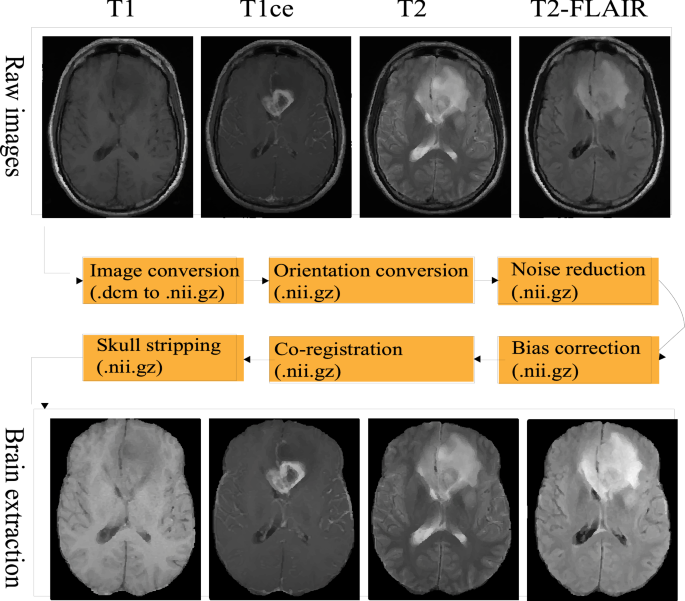
Key Benefits of Business English Shadowing
1. Authentic Pronunciation Development
By mimicking native speakers in business contexts, I've found that shadowing helps professionals adopt authentic pronunciation patterns that are crucial for being understood in international business settings. This is especially important when using industry-specific terminology that might be unfamiliar to non-native speakers.
2. Enhanced Speech Rhythm and Stress
Business English has its own cadence—particularly in presentations and negotiations. Through shadowing, I've helped clients develop natural speech patterns that sound more persuasive and authoritative, which is essential for effective presentation skills in professional settings.
3. Business Vocabulary Muscle Memory
Shadowing creates muscle memory for business-specific phrases and collocations. I've seen professionals move from awkwardly constructing sentences to fluently producing natural business expressions through consistent shadowing practice.
4. Enhanced Listening Comprehension
In global business environments, understanding various accents and speaking speeds is crucial. Shadowing trains the ear to process business English more efficiently, making it easier to follow fast-paced meetings and calls with international partners.
5. Increased Professional Confidence
Perhaps most importantly, I've witnessed how shadowing builds confidence for high-stakes business situations. When you've repeatedly practiced similar language patterns through shadowing, you're much more likely to produce them confidently when it matters most.
Essential Shadowing Techniques for Business Professionals
Through my work with business clients, I've developed several specialized shadowing techniques that are particularly effective for professional communication. Each addresses different aspects of business English fluency:
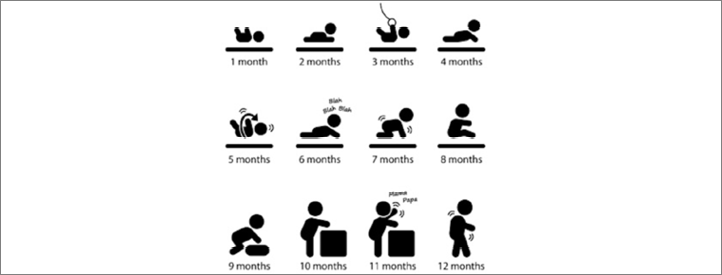
Business English Shadowing Techniques
flowchart TD
A[Business English Shadowing Techniques] --> B[Listen-Repeat]
A --> C[Mirroring with Movement]
A --> D[Record and Compare]
A --> E[Speed Variation]
A --> F[Functional Shadowing]
B --> B1[Focus: Business Terminology]
C --> C1[Focus: Confident Body Language]
D --> D1[Focus: Self-Assessment]
E --> E1[Focus: Adaptability]
F --> F1[Focus: Context-Specific Language]
style A fill:#FF8000,stroke:#333,stroke-width:1px,color:white
The "Listen-Repeat" Technique
This foundational technique involves listening to short segments of business audio (10-15 seconds) and immediately repeating what you hear. I recommend focusing on business terminology and phrases that are relevant to your industry. Start with slower materials before progressing to natural speed.
Practice tip: Use industry-specific podcast segments that feature terminology you need to master in your role.
The "Mirroring with Movement" Approach
This technique adds physical dimension to shadowing. While repeating the audio, I encourage clients to also mirror the speaker's gestures, posture, and facial expressions. This is particularly valuable for multilingual classroom presentations and business presentations where body language significantly impacts perception.
Practice tip: Use video recordings of successful business presentations in your field and mirror both language and physical presence.
The "Record and Compare" Method
This self-assessment technique involves recording yourself while shadowing, then comparing your production with the original. I've found this particularly effective for helping professionals identify specific areas for improvement in their business English.
Practice tip: Focus on one aspect at a time—first pronunciation, then intonation, then rhythm—rather than trying to perfect everything at once.
The "Speed Variation" Practice
Business conversations happen at varying paces. This technique involves shadowing the same content at different speeds: first at a slower pace to master pronunciation, then at natural speed, and finally at an accelerated pace to build agility.
Practice tip: Use podcast or video playback speed controls to gradually increase difficulty as you master each level.
The "Functional Shadowing" Focus
This targeted approach concentrates on specific business language functions—like persuading, negotiating, or presenting data. By shadowing examples of these functions, you build a repertoire of language patterns for specific professional needs.
Practice tip: Create a library of exemplary business communication samples organized by function (negotiation phrases, presentation transitions, etc.).
Creating an Effective Business English Shadowing Practice
Establishing a consistent shadowing practice is crucial for business professionals with limited time. I've developed a framework that helps my clients integrate shadowing into their busy schedules:
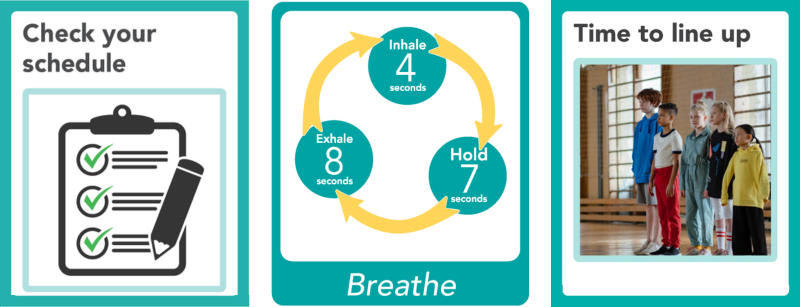
Selecting Appropriate Materials
The quality and relevance of your shadowing materials directly impact your progress. I recommend focusing on:
- Industry-specific presentations - TED Talks or conference presentations related to your field
- Meeting simulations - Role-played business discussions that demonstrate effective communication
- Negotiation examples - Real or simulated negotiations that showcase persuasive language
- Earnings calls - For those in finance or investor relations
- Customer service interactions - For those in client-facing roles
Progressive Shadowing Routine
Weekly Shadowing Schedule for Business Professionals
I've found that even busy executives can maintain progress with this flexible schedule. The key is consistency rather than duration—15 minutes daily is more effective than 2 hours once a week.
Setting Realistic Milestones
Business professionals benefit from clear progress markers. I recommend establishing these milestones:
| Timeline | Shadowing Goal | Business Application |
|---|---|---|
| Weeks 1-2 | Shadow 1-minute segments with 80% accuracy | Brief self-introductions and elevator pitches |
| Weeks 3-4 | Shadow 2-3 minute segments with industry terminology | Short department updates and status reports |
| Weeks 5-8 | Shadow varied speech rates and accents | International calls and multicultural meetings |
| Weeks 9-12 | Shadow complex negotiations and presentations | Client presentations and negotiation sessions |
Measuring Progress Effectively
I encourage my clients to measure their shadowing progress through practical business scenarios rather than abstract metrics:
- Record yourself shadowing the same business presentation at 4-week intervals to hear improvement
- Practice explaining a complex concept before and after shadowing related content
- Track how many times you need to ask for clarification in real business meetings
- Note feedback from colleagues about your communication clarity
Using PageOn.ai's visual organization tools, I help my clients track their shadowing journey with AI Blocks that visualize their progress across different business communication contexts. This visual representation transforms abstract language goals into clear progress markers, making it easier to stay motivated.
Implementing Shadowing in Specific Business Scenarios
Different business contexts require specialized shadowing approaches. I've developed targeted strategies for the most common professional scenarios:

Effectiveness of Shadowing by Business Context
Presentations and Public Speaking
For presentations, I recommend shadowing TED Talks or industry keynotes in your field. Focus on:
- Opening hooks and closing statements
- Transition phrases between sections
- Data presentation language
- Emphasis techniques for key points
- Q&A response patterns
To maximize effectiveness, shadow the same presentation multiple times, focusing on different aspects each time: first content, then intonation, then body language.
Negotiation Language Patterns
Negotiation requires specific language skills that can be developed through targeted shadowing:
- Conditional language patterns ("If you could... then we might...")
- Polite disagreement phrases
- Proposal and counter-proposal structures
- Clarification and verification questions
- Closing and agreement language
I recommend using simulated negotiation recordings that demonstrate both effective and ineffective approaches, shadowing the positive examples.
Meeting Facilitation Language
Effective meeting facilitation requires clear structure and inclusive language. Shadow examples of:
- Meeting opening and agenda-setting language
- Time management phrases ("Let's move on to..." "In the interest of time...")
- Participation encouragement ("What are your thoughts on..." "I'd like to hear from...")
- Summarizing and action item assignment
- Meeting closing language
Practice with recordings of well-run meetings in your industry, paying special attention to how facilitators maintain flow while ensuring all voices are heard.
Customer Interaction Scripts
For client-facing professionals, shadowing customer interactions helps develop:
- Active listening response patterns
- Problem acknowledgment phrases
- Solution presentation language
- Empathetic communication
- Positive language even in difficult situations
Many companies have recorded examples of exemplary customer interactions for training purposes. These make excellent shadowing material for developing a customer service language repertoire.
International Business Etiquette
For global business contexts, shadow examples that demonstrate:
- Culturally appropriate greetings and closings
- Indirect vs. direct communication styles
- Formality levels appropriate to different cultures
- Turn-taking patterns in multicultural conversations
- Non-verbal communication cues
Look for recordings of international business interactions that demonstrate successful cross-cultural communication, ideally with speakers from regions you commonly work with.
I've found that esl lesson plans for beginners can be adapted for business contexts by substituting general content with industry-specific materials while maintaining the same structured approach to learning.
Digital Tools and Resources to Enhance Business Shadowing
The digital revolution has transformed how we can practice shadowing. I leverage several technology tools to help my business clients maximize their shadowing practice:

Digital Ecosystem for Business English Shadowing
flowchart TD
A[Digital Tools for Business Shadowing] --> B[Content Organization]
A --> C[Practice Tools]
A --> D[Feedback Systems]
A --> E[Progress Tracking]
B --> B1[PageOn.ai Visual Organization]
B --> B2[Content Libraries]
C --> C1[Speech Analysis Tools]
C --> C2[Playback Controllers]
C --> C3[Recording Applications]
D --> D1[AI Pronunciation Feedback]
D --> D2[Peer Review Systems]
E --> E1[Visual Progress Markers]
E --> E2[Analytics Dashboards]
style A fill:#FF8000,stroke:#333,stroke-width:1px,color:white
style B1 fill:#FF8000,stroke:#333,stroke-width:1px,color:white
style E1 fill:#FF8000,stroke:#333,stroke-width:1px,color:white
Visual Organization with PageOn.ai
One of the biggest challenges in shadowing practice is organizing materials in a way that facilitates consistent practice. I use PageOn.ai's visual organization tools to create a structured shadowing curriculum for my clients:
- AI Blocks for Content Categories - Organize shadowing materials by business function (presentations, negotiations, etc.)
- Visual Progress Maps - Create a visual journey from beginner to advanced shadowing materials
- Connection Lines - Show relationships between different shadowing materials and business contexts
- Embedded Audio Integration - Link directly to shadowing audio within the visual framework
This visual approach transforms an abstract language learning process into a clear, structured journey that busy professionals can easily follow.
AI-Powered Speech Analysis
Modern speech analysis tools provide immediate feedback on pronunciation, rhythm, and intonation. I recommend:
- Applications that visualize your intonation patterns compared to the original speaker
- Tools that highlight mispronounced words or sounds
- Programs that score your shadowing accuracy and track improvement over time
These tools provide objective feedback that complements the subjective assessment of how your shadowing "feels" as you practice.
Visualizing Intonation Patterns
Business English has distinct intonation patterns that convey confidence and authority. Using PageOn.ai's visualization tools, I help clients see these patterns:
Intonation Patterns in Business Presentations
Visualizing these patterns helps business professionals understand the subtle but important variations in pitch that convey confidence, emphasis, and engagement.
Building a Personalized Curriculum
Using PageOn.ai's AI Blocks, I help clients build a personalized shadowing curriculum that targets their specific business needs:
- Industry-specific terminology blocks
- Function-specific language patterns (persuading, informing, negotiating)
- Progressive difficulty paths from beginner to advanced
- Situation-specific practice scenarios
This personalized approach ensures that shadowing practice directly translates to improved performance in real business situations.
Finding Relevant Materials with Deep Search
Finding appropriate shadowing materials for your specific business context can be challenging. I use PageOn.ai's Deep Search functionality to help clients locate ideal shadowing content:
- Search by industry and business function
- Filter by speaking pace and accent
- Find materials that use specific terminology or language patterns
- Identify content at appropriate difficulty levels
This targeted approach ensures that shadowing practice is always relevant to the client's specific business communication needs.
By integrating these digital tools, I've helped my clients transform their shadowing practice from an occasional activity to a structured, data-driven approach to business English improvement. The visual organization that effective slides for language teaching provide is similar to what PageOn.ai offers for organizing shadowing materials—clear visual structure that enhances learning.
Overcoming Common Challenges in Business English Shadowing
Even with the best techniques and tools, business professionals often encounter specific challenges in their shadowing practice. Here's how I help my clients overcome them:

Dealing with Industry-Specific Terminology
Challenge: Technical jargon and specialized terminology can make shadowing difficult, especially in fields like finance, medicine, or technology.
Solution: I recommend a pre-shadowing vocabulary phase where you:
- Create a glossary of industry terms from your shadowing material
- Practice pronouncing these terms in isolation before attempting full shadowing
- Use PageOn.ai to create visual vocabulary maps that group related terms
- Shadow shorter segments that focus on terminology-heavy sections
This targeted approach builds confidence with specialized language before tackling full business contexts.
Managing Accent Reduction
Challenge: Many business professionals worry about their accent when communicating in English.
Solution: I focus on intelligibility rather than accent elimination:
- Identify specific sounds that impact comprehension in your native language
- Use shadowing materials that emphasize these challenging sounds
- Focus on stress patterns and rhythm rather than perfect pronunciation
- Record your shadowing and have native speakers assess comprehensibility
- Use visualization tools to see the difference between your pronunciation and the model
The goal isn't to eliminate your accent but to ensure it doesn't interfere with clear communication.
Strategies for Fast-Paced Business Discussions
Challenge: Business meetings and negotiations often move quickly, making it difficult to follow and respond appropriately.
Solution: I use a progressive speed approach:
- Start by shadowing business content at 0.75x speed
- Gradually increase to normal speed as your comfort grows
- Practice with increasingly rapid business discussions
- Focus on recognizing key transition phrases that signal topic changes
- Learn filler phrases that buy thinking time in fast-paced discussions
This gradual approach builds the processing speed needed for dynamic business environments.
Maintaining Motivation and Consistency
Challenge: Busy professionals often struggle to maintain consistent practice amid competing priorities.
Solution: I help clients build sustainable habits through:
- Creating visual progress trackers in PageOn.ai that show improvement over time
- Setting up a "streak" system to maintain daily practice
- Integrating shadowing into existing routines (commute, exercise, morning routine)
- Forming accountability partnerships with colleagues
- Celebrating specific improvements rather than focusing only on end goals
Visual progress tracking is particularly effective for maintaining motivation in long-term language development.
Using Visual Progress Markers
Challenge: Language improvement can feel abstract and difficult to measure.
Solution: I use PageOn.ai to transform abstract language goals into clear visual progress markers:
Business English Shadowing Progress
These visual representations help professionals see concrete improvement, maintaining motivation through the inevitable plateaus in language learning.
Advanced Shadowing Techniques for Business Leadership Communication
For professionals in leadership positions, communication skills become even more crucial. I've developed advanced shadowing approaches specifically for executive communication:
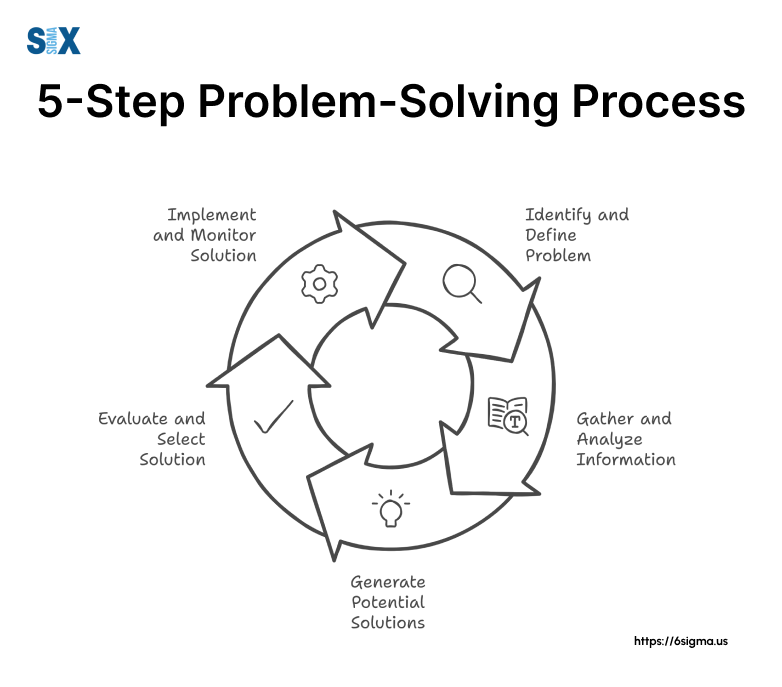
Executive Presence Development
Executive presence combines language, delivery, and non-verbal communication. Advanced shadowing for this skill involves:
- Video Shadowing - Shadow both the words and body language of effective business leaders
- Pause-Power Analysis - Study and replicate the strategic use of silence by influential speakers
- Voice Modulation Practice - Shadow with specific focus on volume, pace, and tone variations
- Authority Markers - Identify and practice language patterns that convey leadership and expertise
I recommend studying presentations by leaders in your industry, paying particular attention to how they establish authority and engage audiences through both verbal and non-verbal communication.
Mastering Persuasive Language Patterns
Leadership often requires persuasion. Advanced shadowing can help develop this skill:
Persuasive Language Structure
flowchart TD
A[Persuasive Business Communication] --> B[Problem Framing]
A --> C[Solution Presentation]
A --> D[Evidence Provision]
A --> E[Benefit Highlighting]
A --> F[Action Prompting]
B --> B1["I've noticed that..."]
C --> C1["What if we were to..."]
D --> D1["The data clearly shows..."]
E --> E1["This approach would allow us to..."]
F --> F1["I recommend we move forward with..."]
By shadowing persuasive business presentations with this structure in mind, you can build a repertoire of effective persuasion patterns for different business contexts.
Developing Storytelling Abilities
Business storytelling has become a crucial leadership skill. Advanced shadowing for storytelling involves:
- Narrative Arc Shadowing - Focus on how business leaders structure stories with clear beginning, conflict, and resolution
- Emotional Engagement - Shadow how effective speakers use voice modulation to create emotional connection
- Metaphor Mastery - Identify and practice powerful business metaphors that simplify complex concepts
- Data Storytelling - Shadow presentations that effectively weave data into compelling narratives
TED Talks provide excellent examples of business storytelling for shadowing practice, as do earnings calls and investor presentations that tell the story behind the numbers.
Cross-Cultural Communication
For global business leaders, adapting communication styles across cultures is essential. Advanced shadowing approaches include:
- Cultural Adaptation Shadowing - Practice how skilled communicators adjust their style for different cultural contexts
- Indirect vs. Direct Communication - Shadow examples of both approaches to develop flexibility
- Formality Variation - Practice appropriate levels of formality for different cultural business contexts
- Non-verbal Adaptation - Shadow culturally appropriate gestures and expressions
International business conferences and multinational company presentations provide good material for cross-cultural communication shadowing.
Creating a Personal Leadership Communication Style
The most effective leaders develop a distinctive communication style. Advanced selective shadowing helps with this:
- Signature Phrase Collection - Identify and shadow distinctive phrases from various leaders that resonate with you
- Delivery Pattern Analysis - Study rhythm and emphasis patterns that feel authentic to your style
- Selective Technique Adoption - Choose specific techniques from different communicators rather than mimicking one person
- Style Integration Practice - Practice combining these elements into a coherent personal style
Using PageOn.ai, I help clients create a visual map of communication elements from different leaders, then integrate these into a coherent personal style that feels authentic while incorporating proven effective techniques.
Measuring Success and Continuing Development
Effective shadowing practice requires clear assessment methods and continuous improvement strategies. I help my clients implement these approaches:
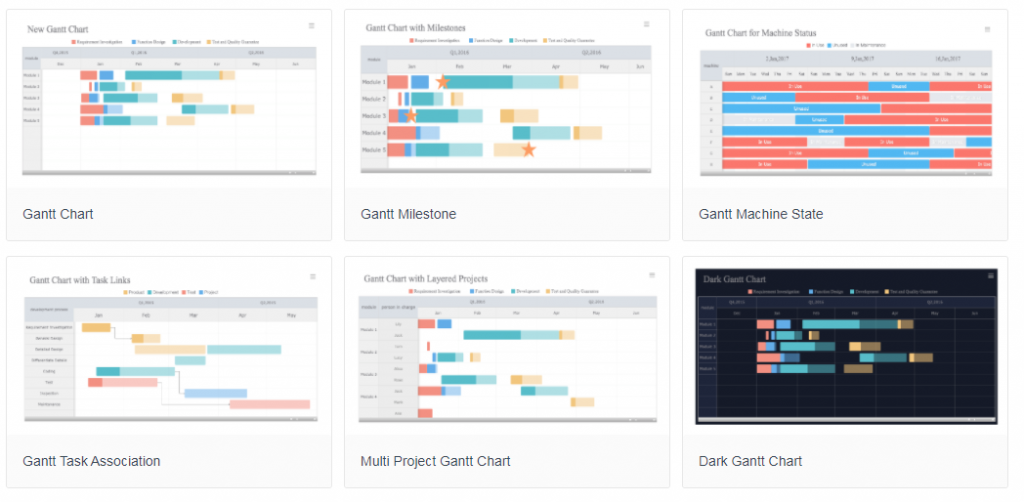
Practical Assessment Methods
Rather than abstract language tests, I recommend business-focused assessment approaches:
- Scenario Simulations - Record yourself handling specific business scenarios before and after shadowing practice
- Peer Feedback - Have colleagues assess your communication clarity in real business situations
- Self-Evaluation Rubrics - Rate specific aspects of your communication (clarity, persuasiveness, etc.)
- Speed-to-Comfort Measurement - Track how quickly you become comfortable with new business terminology
These real-world assessments provide more valuable feedback than traditional language tests for business professionals.
Creating Feedback Loops
Continuous improvement requires structured feedback mechanisms:
Business English Improvement Cycle
flowchart TD
A[Targeted Shadowing Practice] --> B[Record Business Communication]
B --> C[Analyze Performance]
C --> D[Identify Improvement Areas]
D --> E[Select New Shadowing Materials]
E --> A
style A fill:#FF8000,stroke:#333,stroke-width:1px,color:white
This cyclical approach ensures that shadowing practice remains targeted to your most important improvement areas.
Transitioning to Spontaneous Communication
Shadowing is ultimately a bridge to natural, spontaneous business communication. I recommend this progression:
- Pure Shadowing - Repeat exactly what you hear
- Delayed Shadowing - Add a 1-2 second delay before repeating
- Paraphrased Shadowing - Repeat the same ideas in your own words
- Responsive Shadowing - Listen to a business scenario and respond appropriately
- Spontaneous Production - Generate business communication without a model
This gradual progression builds the neural pathways needed for fluent business English production.
Long-term Maintenance Strategies
Once you've reached your initial fluency goals, these strategies help maintain and advance your skills:
- Weekly Maintenance Sessions - Schedule regular but shorter shadowing practice
- Industry Update Shadowing - Shadow presentations about new developments in your field
- Challenging Context Rotation - Regularly introduce new and challenging business contexts
- Teaching Others - Explain shadowing techniques to colleagues, reinforcing your own skills
Consistency is more important than intensity for long-term language maintenance.
Celebrating Communication Milestones
Recognizing progress is crucial for long-term motivation. I use PageOn.ai's visual tracking to help clients:
- Create visual milestone markers on their language learning journey
- Document "before and after" recordings to hear concrete improvement
- Track positive feedback received in business contexts
- Visualize expanding communication capabilities across different business scenarios
These celebration points provide motivation to continue development even after reaching initial fluency goals.
Transform Your Business English with Visual Learning
Ready to take your shadowing practice to the next level? PageOn.ai helps you visualize your language learning journey, organize shadowing materials, and track your progress with beautiful, intuitive visual tools.
Conclusion: Your Path to Business English Mastery
Throughout my experience helping business professionals improve their English communication, I've seen shadowing consistently produce remarkable results. The technique's power lies in its ability to engage multiple learning faculties simultaneously—listening, speaking, and physical memory—creating stronger neural pathways for language acquisition.
What makes shadowing particularly valuable for business contexts is its focus on the practical aspects of communication that matter most in professional settings: natural pronunciation, appropriate rhythm and intonation, and the confident delivery of complex ideas. Unlike traditional language learning methods that often emphasize grammar rules and vocabulary lists, shadowing develops the muscle memory needed for fluent, persuasive business communication.
As you implement the techniques we've explored—from the basic Listen-Repeat approach to advanced Executive Presence development—remember that consistency matters more than perfection. Even 15 minutes of focused shadowing practice daily will yield significant improvements over time.
The journey to business English mastery is made significantly easier with visual tools like PageOn.ai that help organize your learning materials, track your progress, and transform abstract language goals into clear, achievable milestones. By visualizing your language learning journey, you maintain motivation through the inevitable plateaus and celebrate concrete progress along the way.
Whether you're preparing for an important presentation, navigating cross-cultural negotiations, or simply wanting to communicate more confidently in everyday business contexts, shadowing provides a proven path to English fluency that directly translates to professional success.
You Might Also Like
Creating Impactful Cultural Presentations: AI-Driven Visual Storytelling for Cultural Expression
Discover how to create authentic cultural presentations using AI-driven visual storytelling techniques. Learn to transform cultural concepts into engaging visual narratives with PageOn.ai.
PowerPoint Compatibility Solutions: Cross-Version Presentation Success Guide
Discover effective solutions for PowerPoint compatibility issues across versions. Learn to preserve animations, formatting, and graphics while ensuring seamless cross-platform presentation success.
Interactive Web Parts That Transform Knowledge Sharing | PageOn.ai
Discover how interactive web elements create engaging learning experiences. From infographics to knowledge graphs, learn how to transform static content into dynamic knowledge sharing tools.
Transforming IT Support: Visual AI Solutions for Employee Help Desk Without the Wait
Discover how visual AI transforms traditional IT help desks into efficient support systems that eliminate wait times and boost productivity with interactive visual troubleshooting solutions.
